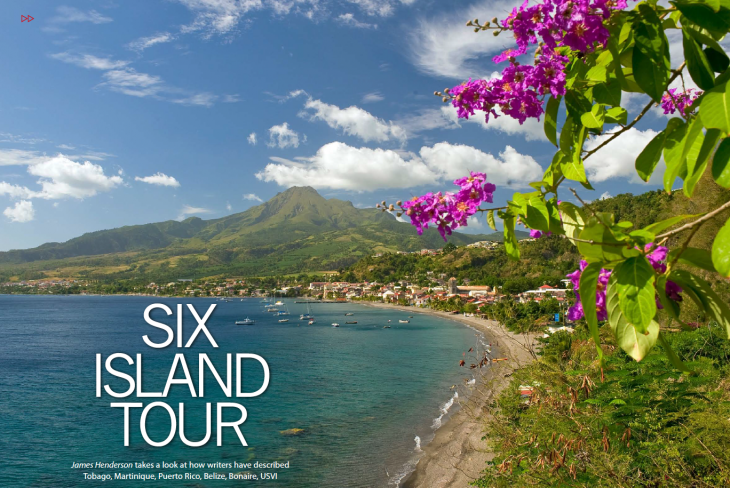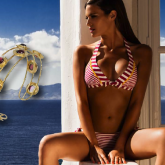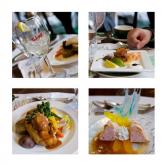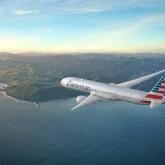
James Henderson takes a look at how writers have described Tobago, Martinique, Puerto Rico, Belize, Bonaire, USVI
As a writer who has covered the Caribbean over the past 25 years, I look with some admiration at the work of other writers who have written about the area - in drastically less comfortable circumstances - over the last five hundred.
I feel I should acknowledge the relative comfort of travelling in the modern age. Until a century ago there wasn’t even ice to put in your drink. In the late 1700s, the area was a hardship posting. And before that? Well, the Caribbean was frontier land, and often dangerous. In time of war you could be taken a foreign navy and locked up for a few years or captured by pirates.
Still, the travel writer’s classic dilemma - exactly how effusive to be in your praise of an island - appears early. A piece of writing about Tobago from 1683 shows this rather nicely. Captain John Poyntz, an adventurer and soldier who had travelled around the islands, produced a document called: Present Prospect of the famous and fertile island of Tobago - A Description of the Situation, Fertility, Growth and Manufacture of the said island. He writes of the abundance of ‘armoured animals’ and the grain and fruits - Then there’s the Prickle-Apple, of a sharp and brisk taste (and an Indian expedient against the Bloody-Flux) it makes a brave Marmalade… But the Prickle Pear, to speak its due praise, is one of the most sovereign fruits in the Indies…’ Anyone who’s sat on a Caribbean veranda at sunset and guzzled tropical fruits will know just how right he was.

Tobago is just as wonderful nowadays, of course.Even now, 330 years on, Tobago is not as developed as most other islands and has a great offer. As it turns out, Captain Poyntz was drumming up interest in a settlement of the island. It is, basically, a brochure – perhaps the very first piece of travel PR. (Actually no, to be fair, that probably goes to Columbus himself, who talked up the islands shamelessly in order to fund another voyage.)
An interesting footnote to all of this is that Poyntz’s document was very likely used by Daniel Defoe as the source material for Robinson Crusoe. The novel is set in the Pacific, but Defoe is thought to have read it. Writing in the late 1690s was a Father Labat, a Dominican priest and roving gastronome, occasional spy and general Caribbean busybody. He was based in Martinique and is memoir Nouveau Voyage aux Iles d’Amerique is probably the most entertaining book about early Caribbean travels – inquisitive, earthy and unfailingly humorous.
He writes about his many meals, meeting pirates and enemy admirals. One occasion being chased by Spanish pirates - he refused to fire the only cannonball, as it was needed to crush the garlic. Then, when about to be put to death, he suddenly found himself surrounded by his captors on their knees – oh, by complete chance - they had discovered a cross of the Holy Inquisition in his baggage. I wonder how that got there…

 Even in the late 1600s, Martinique was the lynchpin of French power in the Caribbean - in many ways it still is. The island is quite developed and busy, but of course they carry it off in inimitable French style, with verve and a certain nonchalance.
Even in the late 1600s, Martinique was the lynchpin of French power in the Caribbean - in many ways it still is. The island is quite developed and busy, but of course they carry it off in inimitable French style, with verve and a certain nonchalance.
The name Anthony Trollope is familiar enough to British readers. Less well known perhaps is that fact that the novelist (who wrote around 60 books after all), had a day job in the General Post Office. And only a few Caribbean devotees will know that he was sent by them to travel around the Caribbean to improve the region’s postal service. He recounted his adventures in his ‘The West Indies and the Spanish Main’.
He travelled extensively, but he spent more time than anywhere except Jamaica in St Thomas in the US Virgin Islands. It was the crux of his journey because it was the crux of transport in the region (and for postal deliveries too, presumably). In fact he write humorously about not being able to get away from it. The islands were then Danish, but otherwise much remains the same. Trollope wrote: ‘St Thomas is an emporium, a depot for cigars, light dresses, brandy, boots and Eau de Cologne. Many men of many nations go thither to make money. And they do make it.’
Actually St Thomas was already a successful port when Père Labat passed through a century and a half before. He bought some excellent silk and shoes. It’s all down to the huge, excellent harbour at Charlotte Amalie. And with its modern-day cruise ship tourism, plenty of business goes on there still.
James Bond’s travails have taken him all over the western Caribbean and the Bahamas, but Puerto Rico, which Trollope would have passed numerous times presumably, was the scene of one of Bond’s finest finales. Deep in the mountainous interior of this island is a massive satellite dish, the Arecibo Observatory. It was responsible for discovering quasars and pulsars, but it also saw the final scene of Goldeneye, in which Bond, then Pierce Brosnan, kicks the renegade 006 Alec Trevelyan (Sean Bean) off to his death.
 There is no evidence of Trollope visiting Belize, but then there is little evidence of anyone going there 1850s, just a few loggers and whalers. However, a man called Stevens, a lawyer, writer and later Ambassador from the States, arrived there in 1839. Stevens was fascinated by the Mayan ruins and with his draughtsman travelling companion, Frederick Catherwood, he documented around 50 Mayan archeological ruins, in his Incidents of Travel in Central America, Ciapas and Yucatan.. Modern day restorations owe a lot to the descriptions and drawings they made. Interestingly his books went on to inspire the work of Edgar Allen Poe.
There is no evidence of Trollope visiting Belize, but then there is little evidence of anyone going there 1850s, just a few loggers and whalers. However, a man called Stevens, a lawyer, writer and later Ambassador from the States, arrived there in 1839. Stevens was fascinated by the Mayan ruins and with his draughtsman travelling companion, Frederick Catherwood, he documented around 50 Mayan archeological ruins, in his Incidents of Travel in Central America, Ciapas and Yucatan.. Modern day restorations owe a lot to the descriptions and drawings they made. Interestingly his books went on to inspire the work of Edgar Allen Poe.

And from early PR in Tobago to the modern world, where public relations and marketing are pervasive. The states of the USA even manage to spread the word on their car numberplates. Puerto Rico is called Isla del Encanto (the Enchanted Isle) and the US Virgin Islands have been America’s Caribbean’ and ‘American Paradise’ over the years.
It has spread to a few of the other Caribbean islands too. In Bonaire they use the expression Diver’s Paradise. Shameless advertising, perhaps, but I suppose, also true. The scuba diving really is superb. James Henderson is Series Editor of the Definitive Caribbean e-guides, which are available through e-book retailers.





